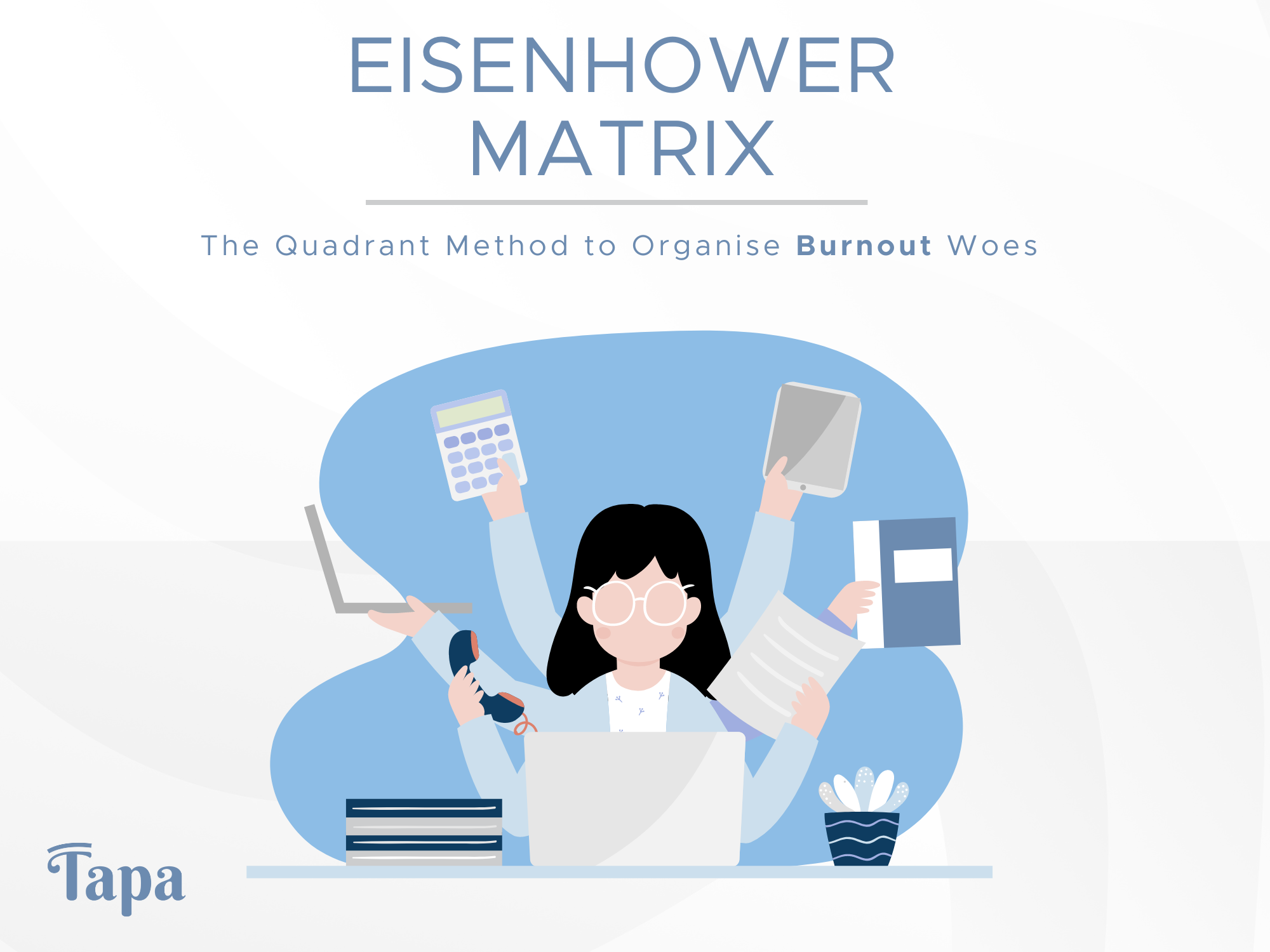Eisenhower Matrix is one of the most effective tools that can reduce stress. This technique can aid individuals in distinguishing tasks and prioritise. Read on to know more.
As we struggle to ace all our priorities, burnout is becoming an increasingly common issue, affecting many people who struggle to keep up with their demanding schedules. One effective tool that can help manage tasks and reduce stress is the Eisenhower Matrix. This technique, rooted in the principles of prioritisation, can aid individuals in distinguishing between tasks that are truly urgent and important, and those that can be delegated or eliminated. By using the Eisenhower Matrix, you can improve your productivity and well-being, potentially alleviating the feelings of overwhelm that contribute to burnout.
What is the Eisenhower Matrix?
The Eisenhower Matrix, also known as the Urgent-Important Matrix, is a task management tool designed to help you prioritise better. It divides tasks into four quadrants based on their urgency and importance:
1. Important and Urgent (Do): Tasks that require immediate attention.
2. Important but Not Urgent (Decide): Tasks that are important for long-term goals but don’t need to be done immediately.
3. Urgent but Not Important (Delegate): Tasks that need to be done soon but can be handled by someone else.
4. Neither Urgent nor Important (Eliminate): Tasks that are time-wasters and can be removed from your to-do list.

Source
How Can the Eisenhower Matrix Help with Burnout?
- Reducing Overwhelm
One of the primary contributors to burnout is the feeling of being overwhelmed by a seemingly endless list of tasks. The Eisenhower Matrix helps by categorising these tasks, allowing you to see clearly what needs your immediate attention and what can be postponed or delegated. This clarity can reduce anxiety and provide a sense of control over your workload.
- Focusing on What Matters
Burnout often stems from spending too much time on urgent but unimportant tasks, leaving little room for activities that are crucial to long-term success and personal well-being. By using the matrix to prioritise important but non-urgent tasks, such as self-care and professional development, you ensure that these critical areas are not neglected.
- Encouraging Delegation
Many people experiencing burnout take on too much, feeling responsible for every task. The Eisenhower Matrix encourages delegation, allowing you to offload tasks that are urgent but not important. This not only lightens your load but also empowers others by entrusting them with responsibilities.
Practical Steps to Implement the Eisenhower Matrix
1. List Your Tasks: Write down all the tasks you need to complete.
2. Categorise: Divide these tasks into the four quadrants of the matrix.
3.Prioritise: Focus first on tasks in the Important and Urgent quadrant. Plan time for Important but Not Urgent tasks to ensure they are addressed before they become urgent.
4. Delegate and Eliminate: Delegate tasks in the Urgent but Not Important quadrant and eliminate those in the Neither Urgent nor Important quadrant.

Source
Example Scenario
Imagine you have a typical day packed with meetings, project deadlines, and personal errands. By applying the Eisenhower Matrix, you identify a project deadline as Important and Urgent, requiring immediate focus. A routine staff meeting, though urgent, can be delegated to a colleague, allowing you to concentrate on critical tasks. Planning a family holiday, an Important but Not Urgent task, can be scheduled for later in the week. Finally, browsing social media, which is Neither Urgent nor Important, is eliminated from your schedule.
Conclusion
By adopting the Eisenhower Matrix, you can prioritise effectively, reduce unnecessary stress, and focus on what truly matters. This method not only enhances productivity but also contributes significantly to mental well-being, making it an invaluable tool for anyone struggling with burnout.

